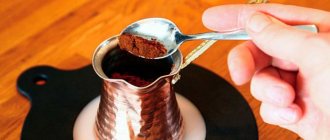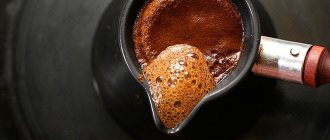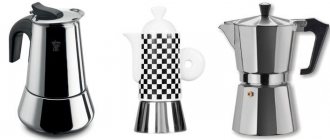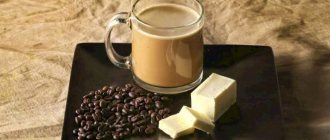A first impression cannot be made a second time, and this applies to many areas of our lives. The concept of business etiquette helps to create a positive image in the eyes of others. Companies striving for excellence know and respect the laws of hospitality accepted in the business environment, because the ability to welcome clients and business partners is an important element of their image. Offices of modern companies strive not only not to violate these laws, but also to comply with them in the best possible way. Large companies even train staff in the basics of etiquette when receiving guests and clients. There are even individual employees (coffee ladies) whose responsibilities include preparing and serving coffee to the company’s clients and partners.
An important role in business etiquette is played by serving coffee and tea during negotiations or a coffee break. Based on the characteristics of the company, one or another type of treat is offered. In large stores, points of delivery of goods, car services, that is, wherever there is a large flow of customers, coffee machines are installed. This is the easiest way to provide an additional level of customer service. But if we are talking about a high-level company or office, where every client is dear and valued, a treat is not just a sign of attention, but also an indicator of the level of the company, corporate identity and respect for the client. Many companies decorate serving items with company logos - this increases prestige.
When to serve
There are several moments when it is customary to serve tea or coffee: 1. The guest has arrived for a scheduled meeting, but its start is delayed for some reason - it will help brighten up an awkward pause and start the conversation on an abstract topic. 2. Before the start of a business meeting in the meeting room - it puts you in a business mood and helps you cheer up. 3. In the middle of a long conversation, an hour and a half after the first treat, during this pause the guests systematize and think about the results of the conversation. 4. During a break during meetings, negotiations, meetings, guests will communicate with each other in an informal setting.
Etiquette rules: how to serve tea and coffee
Not long ago we already told you how not to get confused at a dinner party and choose the right glasses for the celebration. But what if you yourself don’t like to have long, prim lunches, but just friendly get-togethers over a cup of tea or coffee? It is clear that in such cases it is not the setting of the table that is important, but the conversations that take place at it. However, if you want to surprise your guests with a tea ceremony carried out according to all the rules, then our article today will help you understand all the intricacies of tea drinking.
If you intend to arrange a traditional tea party for relatives and close friends, then a set is required, preferably an antique one and porcelain. Cups are placed on the table according to the number of guests and are not shared with saucers. It is customary to brew tea before the guests gather at the table: you should pour it into cups and only after that invite guests to the table.
You shouldn’t say: “I’ll go boil some tea” or “I’ll make coffee for us,” the correct phrase in this case is: “I’ll make tea/coffee.” Tea bags or instant coffee are inappropriate for such cases; offer guests only freshly brewed loose leaf tea or coffee beans. Additionally, set the table with a plate of lemon, a small vase with several types of cookies, a sugar bowl and a milk jug.
If there is a cake, it should be cut into pieces in advance and served on a separate plate to each guest. The cups should be positioned with the handle to the right, with a teaspoon placed next to it on the saucer.
If you are planning to have an afternoon tea party in a beautiful garden, then using a glass teapot would be a great idea. This option assumes a freer social circle and the absence of prim relatives in old age. A glass teapot can be filled with aromatic tea combined with chopped fruits or flowers. In addition to its unusual taste, this tea also has a festive appearance, so you don’t even need to decorate the table additionally.
A glass teapot can be placed on a small improvised candlestick or, conversely, on a vase with ice - depending on what time of year your tea party takes place. It is also better to use glass cups or glasses so that your guests can enjoy the beauty of the drink.
As for tea bags, as you already understand, this option has little in common with the canons of etiquette. However, in the modern world, with its fast pace and quick change of scenery, an impromptu tete-a-tete tea party can take place at any moment. Therefore, always keep a beautiful pair of tea and tea in individual bags ready.
At the right moment, all you need to do is arrange cups and saucers beautifully on a tray and begin discussing pressing topics. Be sure to provide a separate plate for your guest to place their used tea bag after their tea has reached the desired strength.
Conversations over a cup of coffee involve fewer people, which means a more restrained serving option. Traditionally, there should be an elegant coffee pot, several cups and saucers and a plate of pastries. Additional items should be placed as desired: if guests come to you not for the first time, you probably know their tastes.
Unlike tea, coffee is poured in the presence of guests (which is probably why the coffee pots are so elegant). However, this is appropriate if all guests prefer to drink one type of coffee; otherwise, give them the initiative by additionally placing a milk jug, a saucer with lemon and a sugar bowl.
The popular French press is best used only for sudden friendly get-togethers or if you want to surprise guests with some kind of coffee mix: coffee is placed in a French press in the kitchen and left for a few minutes, after which it is put on the table.
Of course, the serving itself also looks more casual: a modern version of cups or glasses, some sweets, flowers or fruits.
If you are the owner of an old, elegant coffee pot, then, alas, you cannot serve coffee directly in it under any circumstances. Of course, if you have guests staying overnight, then you can have a leisurely conversation in the morning, while simultaneously preparing (not brewing, remember?) coffee in a silver Turk. Your conversations will be enveloped in the exciting aroma of coffee, setting your thoughts in the right direction. Then the coffee should be poured into small cups and only then taken to the table.
For a private conversation, you can not invite guests into the kitchen, but serve your morning coffee on a small tray, complementing it with a plate of cookies, an elegant napkin, and fresh flowers, if desired.
We recommend reading:
Tea corner
For coffee lovers
How to choose a tea set
Photo: 1zoom.me, samozvetik.ru, pinme.ru, mywishlist.ru
Add to favorites3
- Tags
- tea
- coffee
- serving
tea, coffee, serving
What to Serve
It is recommended to serve classic coffee, always of good quality, freshly roasted and freshly ground, in no case soluble, without flavoring additives. Serve coffee with a glass of cold water and cream in individual packaging. You can choose between black or green tea. Sugar must be served with black tea, even if it will not be touched. To green - it is better to check with the guests.
The quality of coffee cannot be neglected. If you use an espresso machine, choose special espresso blends. We recommend professional blends from Fiore, Donizetti or Paganini. As a worthy alternative, we suggest using high-quality coffee from plantations. Both an espresso machine and a filter coffee maker are suitable for its preparation. The second option is even preferable, as you will surprise your guests with unusual and very tasty coffee. And of course, the coffee must be freshly roasted. Gone are the days of drinking “just coffee.” The opportunity to taste coffee in different countries has made people picky in choosing the type and method of preparation. Coffee lovers are turning into connoisseurs.
You don't have to drink coffee
Meetings over a glass of beer are arranged for long-term communication on philosophical topics. And over a cup of coffee - for a short and productive business conversation.
But even if you meet in a coffee shop, you don’t have to drink coffee. Some people don't drink coffee at all. Drink anything - chamomile tea or cherry juice, as long as this process takes you the same amount of time as a cup of coffee. When it comes to food, there is a high probability that it will be difficult for you to carry on a conversation with your mouth full.
Features of serving coffee and tea
It is correct to serve tea and coffee as follows: The cup is filled to two-thirds of its volume. It's no longer worth it, as it will cause inconvenience when trying to lift the cup. — the handle of the cup turns to the LEFT; - the spoon is placed with the handle to the RIGHT. You can take a cup with either hand, but it is better to use a spoon with your right hand. - the spoon is placed IN FRONT of the cup, and not behind it and not perpendicular to the table; — it’s more convenient to put sugar cubes ON a spoon, and not on a saucer BEHIND the cup. The guest may be embarrassed to take the sugar with his hands, and an unsuccessful attempt to lift a piece of sugar with a spoon will cause awkwardness. It is best to serve refined sugar separately in a sugar bowl along with sugar tongs or a separate spoon. It is better to serve cane sugar with espresso. If there is no lump sugar, then serve in separate stick bags. If you decide to serve dessert, give preference to the safest - dry cookies and pastries. They should be served after the cups of drinks have been set out. Have some napkins in reserve. If the napkin gets dirty during serving, it should be replaced immediately.
Follow these simple rules, buy fresh coffee, and your partners will be happy to return to negotiations. Enjoy your coffee and lucrative contracts!
Prepare in advance
When you first meet someone, you usually ask a series of standard questions like, “What do you do?” or “Where are you from?” This is how great conversations start at your mutual friend's birthday party, but it's clearly bad manners at business meetings.
Most likely, the person you are asking for a meeting is an opinion leader, known in certain circles, and has accounts on various social networks. There you can find answers to all your questions about the biography of this person. Typically a meeting over a cup of tea takes no more than half an hour, so don’t waste your time discussing issues that can easily be Googled before the meeting. In addition, such a person usually answers standard questions a thousand times - from the press, business partners and other interested parties. Stand out from the crowd by skipping this basic level of introductions. Just say a few words about yourself and get straight to the point.
Serving tea at home
When receiving guests at home, it is not necessary to arrange a magnificent feast. It is enough to set the tea table. To do this, you should lay out a clean, beautiful tablecloth, lay out cutlery, and put out a tea set. Green or black tea is brewed in a teapot, following certain rules. But the hostess must pour tea into cups in the presence of guests, passing the cup of tea from hand to hand clockwise. The tea table can be decorated with sweets and pastries. A sugar bowl with sugar, a milk jug with cream, and a plate with lemon are placed in the middle of the table.
Serving tea with jam involves a common vase with it, and each guest should have a small rosette for jam and a spoon. Honey can be served in the same way. At a home tea party, bagels, gingerbread cookies, pies, cakes and even sandwiches are appropriate. Properly brewed and served tea will lift your spirits, put you in the right mood, encourage conversation, cooperation, and show how hospitable and kind you are.
How to increase sales in a coffee shop?
We looked at how to advertise a coffee shop and increase traffic to the establishment. Use different marketing tools. As a rule, it is the combination of effective outdoor advertising of a coffee shop with promotion through the website and social networks that gives the desired result.
Don't want to waste time launching a project yourself? Choose ready-made objects, investments in which will accelerate the return on investment. Buying an operating coffee shop will allow you to reduce the size of investments at the start and when promoting the coffee shop.
WHY DO YOU SERVE WATER FOR COFFEE?
In addition to appetizers and desserts, they often bring some other elements that create a special atmosphere, complement the taste, making your day enjoyable.
First of all, let's talk about water. Let us remind you that it replenishes the lack of fluid that occurs after drinking Americano, because coffee is a natural diuretic. To help the body, always bring a glass of water with a cup of espresso.
You may also be given pieces of sugar, cane or cinnamon, to eat as a snack. Think this is a little weird? But in fact, this combination is very common abroad, where sugar is much more often consumed with coffee, rather than in a cup.
And, of course, you will be served a milk jug if you ordered a drink with milk or cream, and with it a jar of cinnamon. Cinnamon perfectly reveals the coffee properties. Supplements, is a flavor enhancer, and a metabolism accelerator. Together with caffeine, cinnamon helps you lose weight, we also wrote about this in one of our articles.
Advertising for coffee shops: how to retain regular visitors
Remember that it is important not only to attract new guests, but also to maintain the interest of those who have been visiting the coffee shop for a long time. Use proven methods:
- Discount system.
With each subsequent order for the guest, the discount increases. It may have restrictions: for example, it does not apply on weekends or only applies during a certain period of time. - A compliment from the chef.
A small treat from the establishment always has a positive effect on the reputation of the coffee shop. Will recommend her to friends and acquaintances. Remember that word of mouth is one of the most effective options for promoting coffee shops. - Invitations to events.
For example, master classes, presentations. An opportunity to spend a holiday in a coffee shop with a discount available only to regular guests. - Small surveys
to find out what visitors lack and what they would like to improve.











